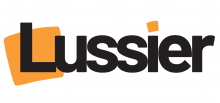On Monday, July 8, 2013, the city of Toronto experienced one of its worst-ever recorded natural disasters. At Pearson International Airport, 123 mm of rain fell that day, a record surpassing even the amount came down during the infamous Hurricane Hazel-influenced storm in 1954. The downpour flooded homes and streets, knocked out power for some 300,000 Toronto Hydro customers, and even trapped a train full of commuters for seven hours in the Don River valley. Total damages were estimated in the range of $1 billion. Weeks earlier, towns and cities across Alberta were decimated by flooding that killed four, displaced 100,000 residents, and caused billions in damage.
A year later, what can we learn from these floods? For one, be careful where you choose to buy a home.
Crisis in Calgary: The Long-Term Effects
While Toronto-area residents were getting waterlogged, Albertans were already starting the process of cleaning up their own flood-related mess. While most of the damage has been cleared by now, it wasn’t until this spring that one long-term impact became apparent: some once-trendy riverside neighbourhoods are no-longer desirable.













